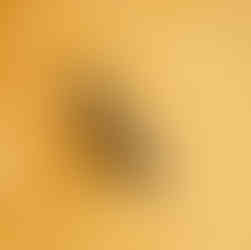Honeycomb
- Emily
- Apr 17, 2024
- 3 min read
Updated: Oct 21, 2024
Last year, while on vacation in Italy, honeycomb was on the breakfast buffet at my hotel. I love food with texture, & I couldn't believe I'd never had the opportunity to try honeycomb before. Although I'm not really a fan of honey, I was excited to dig in -- literally.
The honeycomb, a rectangular slab about 2 feet by 8 inches, was displayed on a platter with a large spoon. To serve, I used the spoon to "cut" through a corner of the slab & scoop the piece into a bowl. Along with the honeycomb was European-style, unsweetened muesli with dried fruit and cream. I layered everything together, ordered an americano, & discovered amazingness.
The texture of honeycomb is incredible. Delicate yet firm. Crunchy & chewy. Like a gooey wafer. Crushing it with my spoon & mixing it with the unsweetened muesli & cream was decadent & special.
Honeycomb is comprised of raw honey, beeswax, & pollen. It is the only product produced by insects that humans eat. Honeycomb has many health benefits. It is antimicrobial & anti-inflammatory. Because it contains a long-chain fatty acid, it can have a positive effect on overall cholesterol levels. Being a lower glycemic food (with levels as low as 35, compared to sugar with a GI rating of 110), honeycomb does not cause a blood sugar spike.
The honey that is usually bought in stores, in a jar, is processed & pasteurized. Therefore, most of the healthy enzymes & microbes are removed during the processing, & the honey becomes more standardized in flavor, texture, & appearance. On the other hand, raw honey, that is present in honeycomb, maintains its health benefits and has great variety in color & flavor, depending on the region.
I wanted to learn more about different ways to enjoy honeycomb, & I definitely wanted to find some honeycomb to carry in The Market. As luck would have it, my son's teacher's family is one of the largest producers of liturgical candles, making their beeswax candles by hand right here in New Hampshire (Marklin Candle, Praised Bee). Talking to his teacher, I learned that honeycomb is precious to beekeepers. Making the wax structure of honeycomb is a very energy & labor intensive process: a bee needs to eat approximately 7 pounds of honey to then make 1 pound of wax. Beekeepers often reuse, rather than sell, honeycomb in order to help their bees focus their energy on making honey.
Because of the time & energy necessary to produce honeycomb (and the fact that it is often more valuable to the beekeeper as a integral part of their beekeeping, rather than as an end product for sale), honeycomb comes with a price similar to that of fine chocolate, cheese, or charcuterie, But just like those products, a little honeycomb goes a long way. And honeycomb is dense!
Furthermore, honeycomb has a long shelf life. Some sources say it can last forever (if you don't eat it first!). Over time, the honeycomb may crystalize, but it is still edible.

Honeycomb is a very, very easy way to elevate any plate. Keep some on hand whenever you want to amplify something simple.
Mix into yogurt or oatmeal
Sprinkle pieces on top of ice cream
Add to a cheese plate -- spread onto crostini with a wedge of brie or with blue cheese & walnuts & a briny slice of charcuterie
Add to a simple green or fruit salad
Spread on warm fresh bread
As a gorgeous, edible garnish on a dessert or on a cocktail














Comments